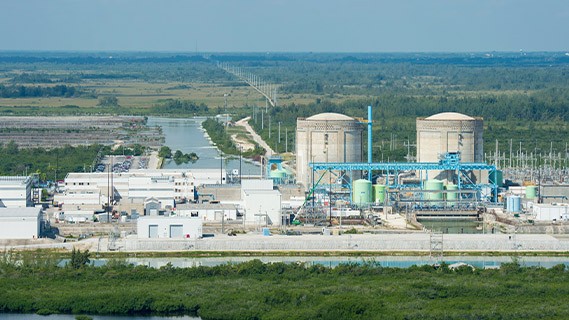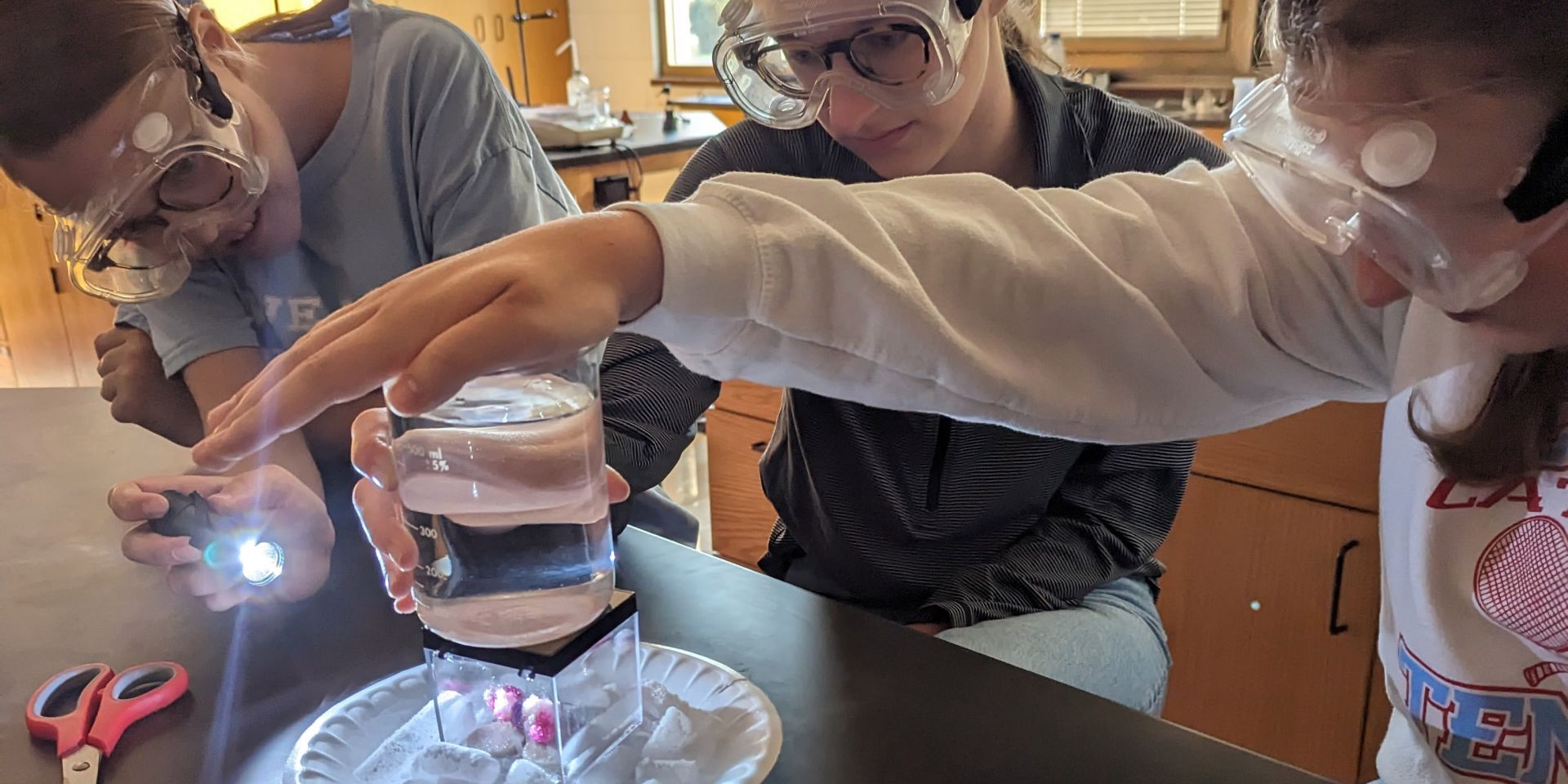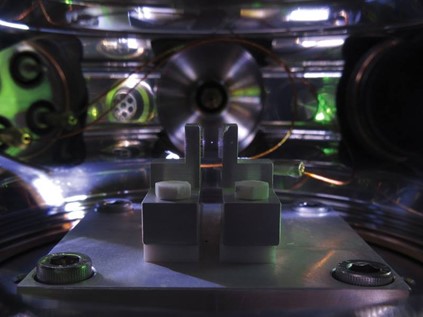Idaho National Laboratory employees consult on a microgrid at Utah’s Dugway Proving Ground. Two solar projects were selected for development on INL land. (Photo: INL)
On July 28, 2023, the Department of Energy launched its Cleanup to Clean Energy initiative, an effort to repurpose underutilized DOE-owned property—portions of which were previously used in the nation’s nuclear weapons program—into the sites of clean-energy generation.
Crews demolished a former chemical storage area at the Hanford Site’s Reduction Oxidation Plant. (Photos: DOE)
Workers with the Department of Energy Office of Environmental Management’s contractor Central Plateau Cleanup Company recently demolished a former chemical storage area at the Reduction Oxidation Plant, one of five former plutonium production facilities at the Hanford Site.
Before shutdown of the plant, the working cooling towers of TMI-1 are on the right. The dormant cooling towers on the left are for Unit 2, which was permanently closed because of the 1979 accident. (Photo: Constellation Energy)
Nuclear powerhouse Constellation announced today the signing of a 20-year power purchase agreement with Microsoft that will pave the way for the restart of Three Mile Island Unit 1—under a new name to honor Chris Crane, former chief executive of Exelon when Constellation was part of the larger company.
Turkey Point nuclear power plant. (Photo: FPL)
The Nuclear Regulatory Commission announced this week that it has restored the expiration dates of Turkey Point nuclear power plant's Units 3 and 4 subsequent license renewals (SLRs) to July 19, 2052, and April 10, 2053, respectively.
The Waste Isolation Pilot Plant in southeastern New Mexico. (Photo: DOE)
Juno Beach, Fla.–based NextEra Energy Resources Development has been selected to enter realty negotiations for a large-scale solar electricity generation project at the DOE’s Waste Isolation Pilot Plant (WIPP) in southeastern New Mexico as part of the department’s Cleanup to Clean Energy initiative.
Students using an ANS Visualizing Radiation Cloud Chamber. (Photo: Grace Stanke)
Nuclear science and technology is uniquely positioned to be a gateway for curiosity and exploration for students in grades K–12. Its study examines the literal fabric of reality, it has applications from the tiniest to the grandest of scales. It’s a constantly evolving industry with a bright future of discoveries and new technologies, and it’s an essential factor in our global effort to reduce carbon emissions and transition to cleaner energy sources. Frankly, learning about and doing things with atoms is pretty cool, from a kid’s perspective.
Crews with the Idaho National Laboratory Site’s IWTU replace filter bundles inside the unit’s process gas filter. (Photo: DOE)
The Department of Energy’s Office of Environmental Management announced yesterday that waste processing operations have resumed at the Integrated Waste Treatment Unit (IWTU) at the Idaho National Laboratory Site. The resumption of operations follows the completion of two maintenance campaigns at the radioactive liquid waste treatment facility.
(Image: City of Idaho Falls)
Microreactor developer Aalo Atomics and municipal electric utility Idaho Falls Power have developed a memorandum of understanding that could lead to the siting of seven sodium-cooled microreactors and a power purchase agreement for Idaho Falls.
The NEXT Lab at ACU has been built to house and test the university’s new molten salt reactor design. (Photo: Rusty Towell/ACU)
I really think so. Especially after visiting Abilene Christian University’s new Dillard Science and Engineering Research Center, the home of the Nuclear Energy Experimental Testing (NEXT) Lab and where the university will test its new molten salt research reactor design. The visit was part of the 12th Thorium Energy Alliance Conference. NEXT Lab director and program manager Rusty Towell anticipates that the research reactor will be operational in two years, and I believe it will. What was most impressive is that the reactor is suited to be scaled to any size from small to large—a key feature in any decarbonized world.
Representatives from Natura Resources, the Zachry Group, Abilene Christian University, the University of Texas–Austin, Texas A&M University, and the Georgia Institute of Technology with the construction permit at NRC headquarters. (Photo: Natura Resources)
The Nuclear Regulatory Commission issued a construction permit yesterday to Abilene Christian University, giving ACU and its partners the go-ahead to build the Molten Salt Research Reactor (MSRR) facility on its Abilene, Texas, campus. The 1-MWt research reactor is the first molten salt–fueled reactor to get a construction permit from the NRC. After Kairos Power’s Hermes, it is the second non–light water reactor construction permit issued by the NRC.
TMI-2 Community Advisory Panel board chair Dave Allard at the panel’s September meeting.
The Pennsylvania Department of Environmental Protection (DEP) expressed its confidence in the decommissioning work taking place at the damaged Three Mile Island Unit 2 during a recent meeting of the TMI-2 Community Advisory Panel (CAP). “We cannot be more pleased with the progress being made,” said Dwight Shearer, director of the DEP, during the meeting, held on September 13 in Middleton, Pa.
In this illustration of oscillating UCl3 bonds, neutrons produced at the SNS (purple dots) scatter off molten UCl3 (depicted in green), revealing its atomic structure. Yellow and white shapes simulate data and represent the oscillating UCl3 bonds. (Image: Alex Ivanov/ORNL)
New research into the dynamics and structure of high-temperature liquid uranium trichloride (UCl3) salt—a potential fuel for molten salt reactors—has been published in the Journal of the American Chemical Society. A recent news release from Oak Ridge National Laboratory describes how researchers from ORNL, Argonne National Laboratory, and the University of South Carolina used ORNL’s Spallation Neutron Source (SNS) to document the unique chemistry of liquid UCl3 “for the first time.”
An optically trapped microparticle in high vacuum is visible as a white dot levitated between two lenses, which are used to focus and collect invisible infrared laser light used to trap the particle. (Photo: DOE/Yale Wright Lab)
Start talking about dust in a vacuum, and some people will think of household chores. But dust has featured in recent nuclear science and engineering headlines in curious ways: ITER is deploying oversized dust covers inspired by space satellites in the south of France, while at Yale University, researchers have watched every move of a dust-sized particle levitating in a laser beam for telltale twitches that indicate radioactive decay.



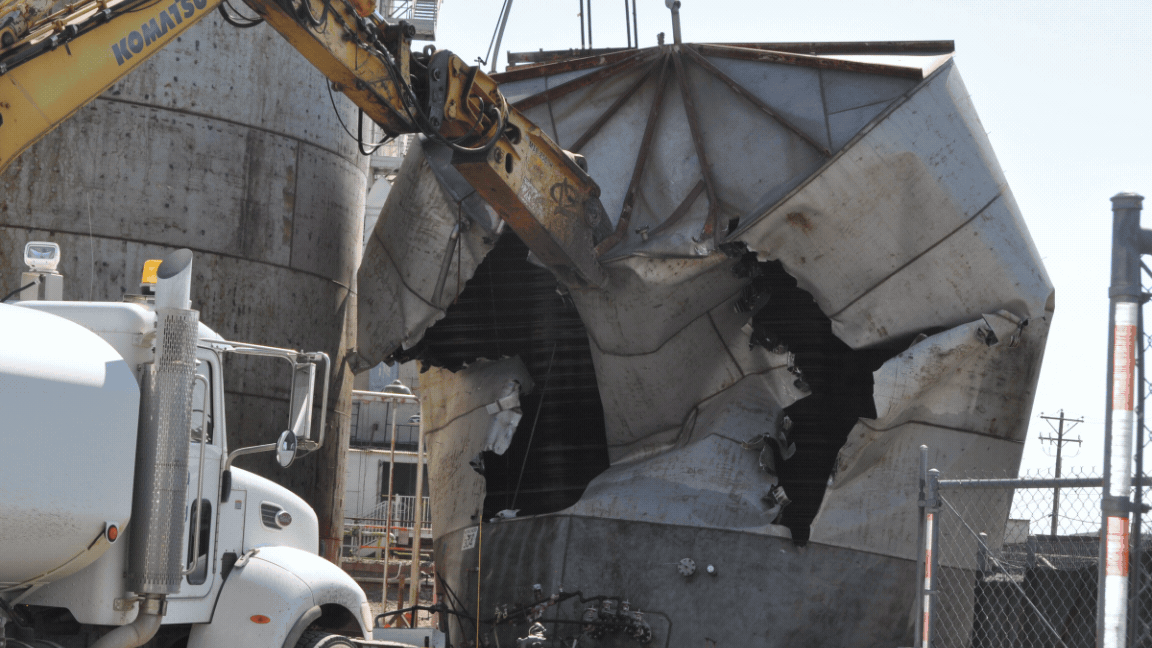

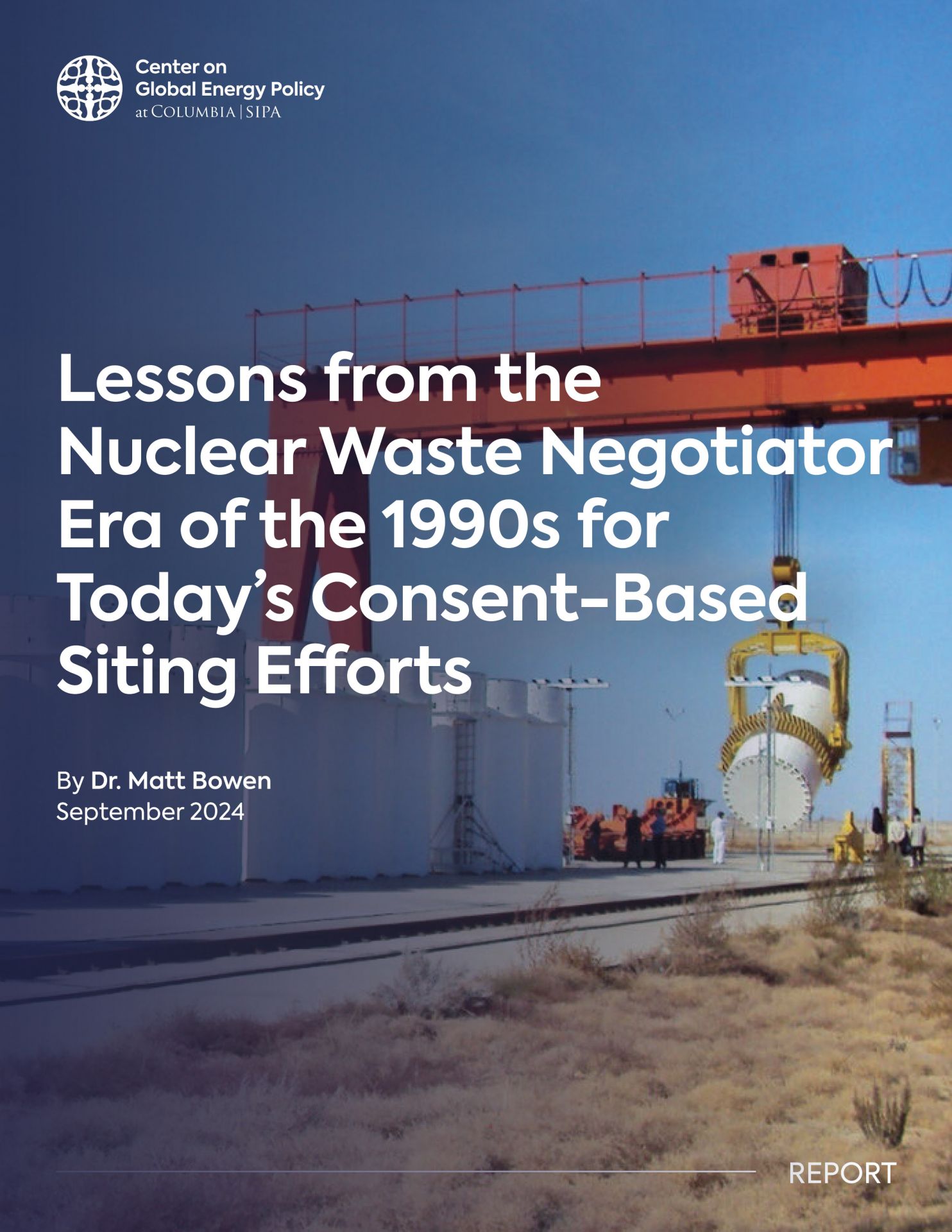 As the Department of Energy embarks on its consent-based process for siting a geologic repository for spent nuclear fuel and high-level radioactive waste, a new report from the Center on Global Energy Policy at Columbia University SIPA highlights relevant lessons from the federal government’s now defunct Office of the Nuclear Waste Negotiator.
As the Department of Energy embarks on its consent-based process for siting a geologic repository for spent nuclear fuel and high-level radioactive waste, a new report from the Center on Global Energy Policy at Columbia University SIPA highlights relevant lessons from the federal government’s now defunct Office of the Nuclear Waste Negotiator.